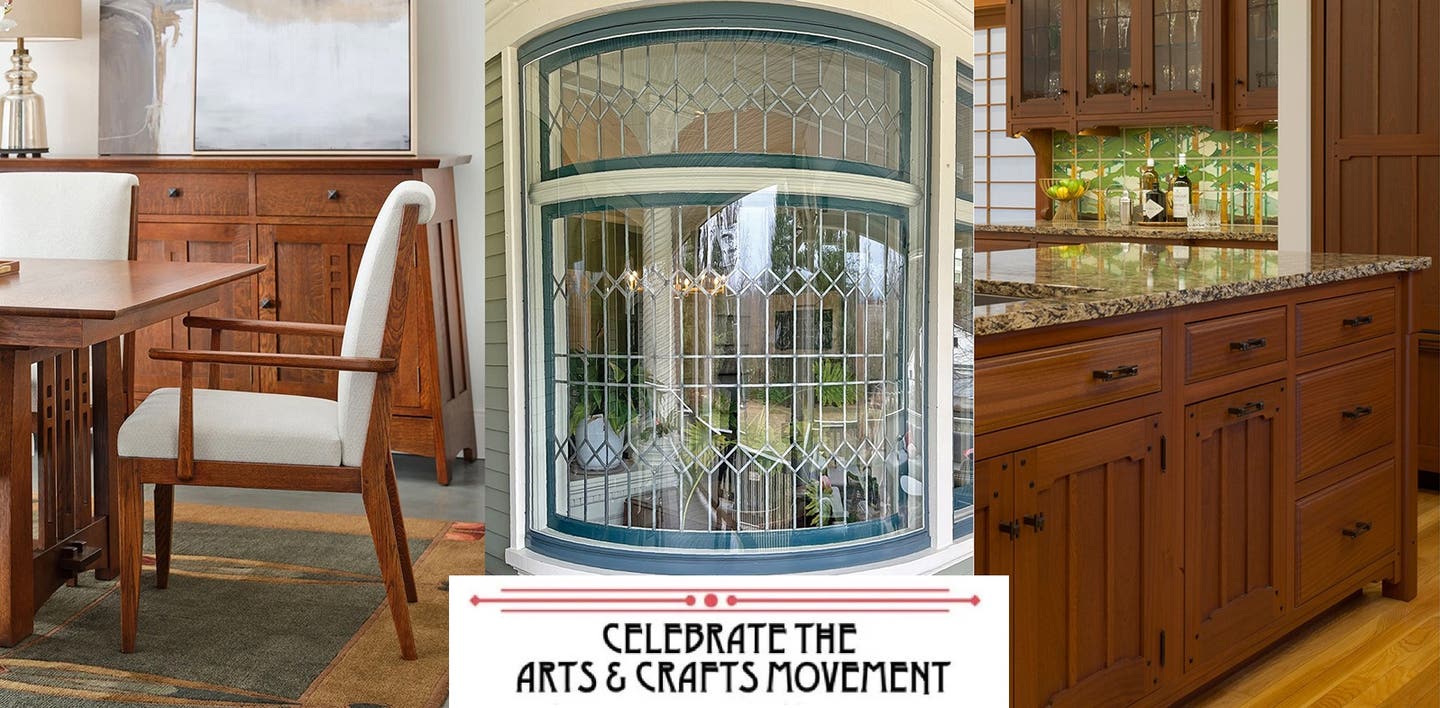The Guild: Shawn Krueger
Encouraged by his grandmother as a child, the fine painter embraced the serenity of Tonalism, and discovered it’s commonality with the Arts & Crafts Movement.
The painter Shawn Krueger traces his love of painting to his late grandmother Louise Krueger, a third-grade teacher and amateur painter who let him rummage through her paint box and encouraged his interest in art. He continued painting as he earned his BFA at Calvin College in Grand Rapids. Later he traveled often to paint all around Great Britain, and he also studied at Oak Hill College in London.
Krueger has focused on landscapes and scenes in nature. He was attracted to the serenity of the American Tonalism movement, which he looks to along with the tenets of plein air painting to create his wonderfully luminous landscapes.
When Krueger bought a 1918 bungalow in Grand Rapids, he realized that his work and Arts & Crafts sensibility have much in common. Tonalism and the Arts & Crafts movement were roughly contemporaneous; both are based on love and respect for nature, hand-craftsmanship, and good design. In the past decade, Krueger has focused on Arts & Crafts-genre landscapes. He has won numerous awards and become a favorite exhibitor at A&C shows and galleries, especially in the Midwest and on the East Coast.
Shawn Krueger’s landscapes are a perfect complement to the warm woodwork and golden tones of American Arts & Crafts interiors.
Krueger acknowledges that bungalow owners are often hampered by limited wall space when they consider hanging a painting. He says his clients often use easels and table easels for display—atop a bookcase or piano, say, or on an oak side table in the glow of a copper and mica lamp.
Shawn’s goal is not to just record the scene, but also to convey its mood and allure. “If you look at my work and hear crickets, smell smoke in the air, or feel the coolness of a breeze on your skin, I feel I’ve done something right.”
Krueger begins on a modest scale: he’ll paint a small plein-air landscape on site, outdoors. “I’m a scrubber when I paint,” he says, “so I prefer the rigidity of a hard panel surface.” He uses a gessoed Masonite panel, sometimes Masonite wrapped in Belgian linen. Once back in his studio, he builds harmonious layers of color and pattern using glazes of translucent pigments that give his brushstrokes a more diffuse and softer edge. The resulting unity of tone and a saturated glow make his work unique. Although he calls the small pieces “studies,” he intends for them to be finished paintings in themselves. The intimate scale allows him to develop the composition and his beautiful tonal range. When he scales up to a larger canvas—studio work not practical in the field—the composition is most often based on one or several of the smaller paintings.
Tonalism
Tonalism is a painting movement or artistic style popular from about 1880 to 1915, preceding Impressionism. Artists painted landscapes with a colored atmosphere or feeling of mist, emphasizing shadows and using dark, neutral hues including soft greys, browns, and blues. (By the late 1890s, critics were describing the paintings as “tonal.”) The emphasis is on tranquility and the spiritual qualities of the setting. Paintings were begun on location—taken directly from nature—but then finished in a studio indoors. George Inness and James McNeill Whistler were leading painters of this school.
Shawn Krueger
Grand Rapids, MI
(616) 581-9753
shawnkrueger.com
shawnkrueger.tumblr.com
Brian D. Coleman, M.D., is the West Coast editor for Arts & Crafts Homes and Old House Journal magazines, our foremost scout and stylist, and has authored over 20 books on home design.







